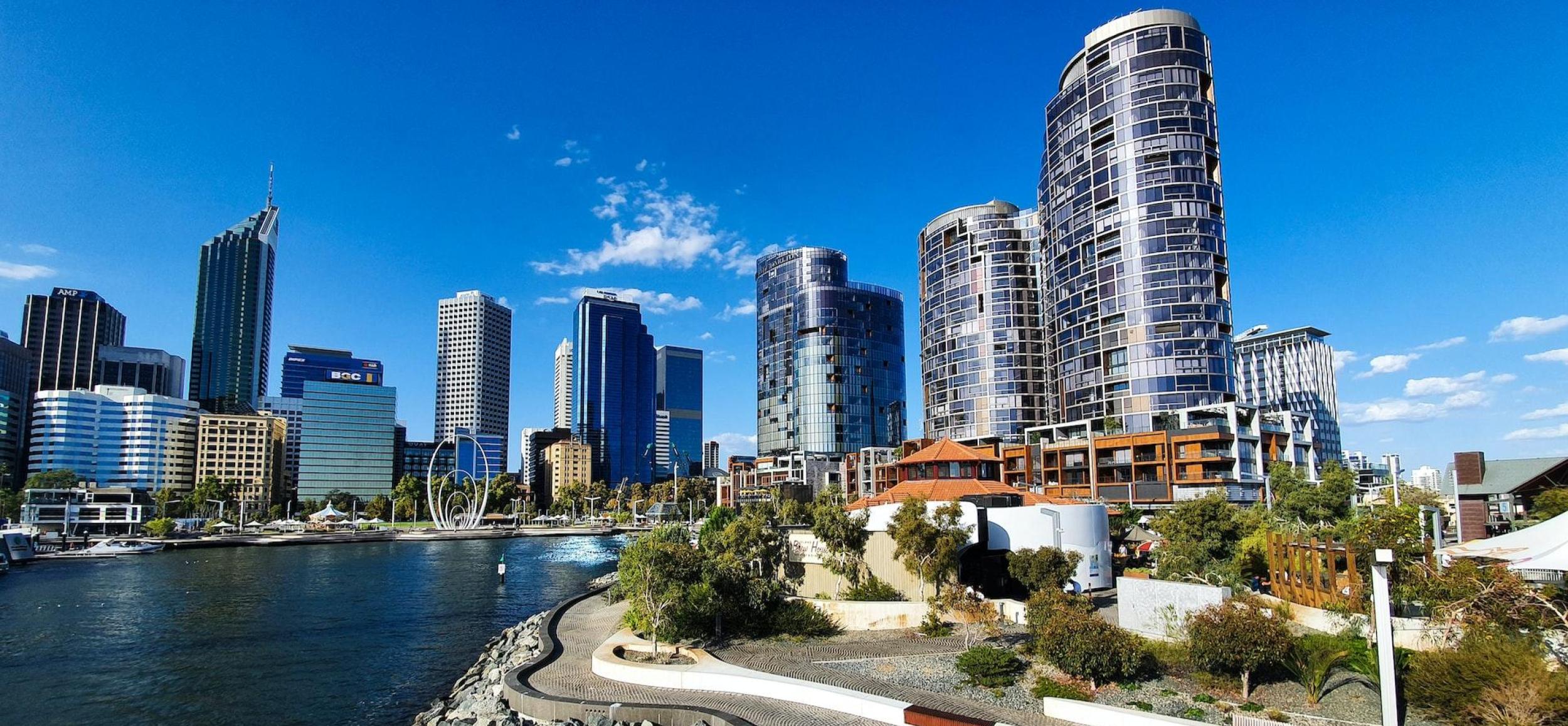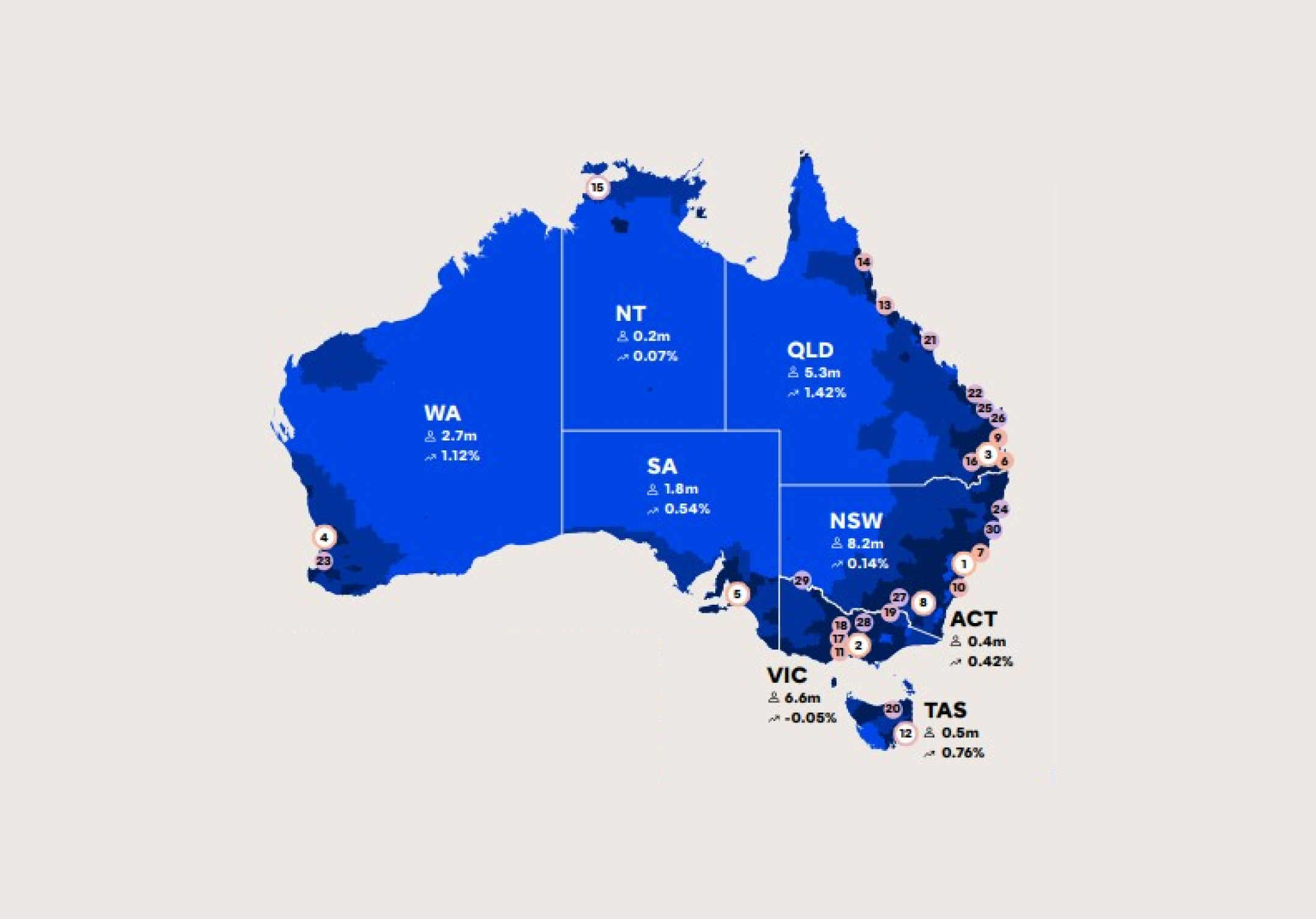Demographics
Looking back and looking forward: how Perth is changing

A story of sprawling growth
There aren’t many cities quite like Perth, Western Australia. The sprawling north-south metropolis of 2.1 million people stretches from Two Rocks in the north to the Peel Inlet in the south approximately 170 kilometres as the car drives.
We know they do love to drive, with 59% of Perth households having 2 or more motor vehicles according to the most recent Census (compare Sydney at 48% or Melbourne at 54%).
Perth continues to sprawl outward, adding 745 new residents every single week for the past decade (387,780 over the last 10 years). Most of this growth is occurring in the outer suburbs, as illustrated by the fastest growing areas including Alkimos, Baldivis, Byford, Ellenbrook and Harrisdale in recent years.
An increasingly diverse city
Like the rest of Australia, most of Perth’s population growth over the last decade has been driven by strong overseas migration, meaning that Perth has quickly become an incredibly multicultural city. Two out of five Perth residents are born overseas, which is on par with Melbourne and second only to Sydney for Australian capitals.
While the top overseas countries of birth remain England (8%) and New Zealand (3%), India now ranks as the third-most popular country of birth (3%) with Perth’s Indian migrant population more than doubling in the last decade.
Diversity of age is another key factor for urban and workforce planners to consider. With a declining birth rate and longer life expectancies, Perth’s median age is increasing in line with the trend nationally. The median age of 37 now into the late-thirties (the median age was still in the 20s as recently as the early 1980s).
As Perth becomes more culturally and generationally diverse, this brings new needs and expectations for housing and lifestyle that planners need to consider. What does the “Great Australian Dream” look like to this new generation of culturally and generationally diverse households, who are navigating a sprawling city with higher costs of living and housing than ever?
What does the future hold for Perth?
As social researchers we are always exploring today’s trends with an eye toward the future. So, what hints do the current trends give us about what Perth will look like in the decade ahead? Firstly, the impacts of COVID-19 cannot be understated. The global pandemic has been the catalyst for the biggest transformation to how we work in a century, with the widespread adoption of flexible working policies in white-collar jobs. An increase of people working from home (or studying from home) through COVID correlated with a decrease in traffic and activity in the CBD areas and a corresponding increase in neighbourhood activities.

While we hope the worst of the COVID pandemic is behind us, many companies have made their flexible working arrangements the new normal. In a world where the “knowledge economy” is an increasingly significant component and a greater proportion of workers are working at least some of their time from home, this has ramifications for where people want to live and the amenities they are looking for from their home and neighbourhood.
Although Australia’s population growth slowed to a trickle as international borders closed during the pandemic, WA’s strong economy and record low unemployment has meant that Perth’s population has continued to grow steadily since the COVID-19 pandemic began, behind only Brisbane as Australia’s fastest growing capital city over the last two years.
The future of Perth will be shaped by the leaders of today and the residents of tomorrow. With Gen Y (born 1980-1994, also known as Millennials) overtaking the Baby Boomers (born 1946-1964) in this most recent Census as Australia’s largest generational cohort, we will see more of their influence in our workplaces and communities.
Similarly, today’s school leavers and graduate workers are Gen Zs born between 1995 and 2009. The emerging generations are more digitally integrated, globally minded and socially connected than the generations that went before them. We are already seeing these expectations shape decisions of today’s corporate and civic leaders, especially in the prioritisation of ESG (Environmental, Social, Governance) considerations in decision-making and strategic planning.
How we can help
Contact us today if you want to better understand how Perth is changing and what this means for your organisation. Whether it’s a board or executive briefing on Gen Z or ESG consumer trends, a demographic analysis of your changing operating context, or partnering with you to develop some research-based thought leadership in your field, we’re here to help.





